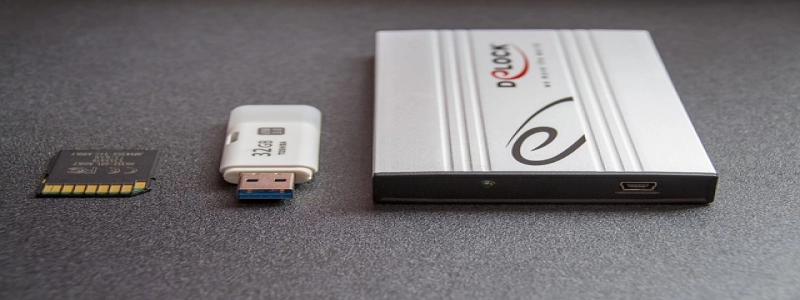多级标题:Ethernet Surge Protector
1. Introduction
1.1 Definition and Explanation
1.2 Importance of Ethernet Surge Protectors
2. How Ethernet Surge Protectors Work
2.1 Overview of Surge Protection
2.2 Specifics of Ethernet Surge Protectors
3. Benefits of Using Ethernet Surge Protectors
3.1 Protection against Power Surges
3.2 Safeguarding Network Equipment
3.3 Enhancing Network Performance
4. Installation and Usage Guidelines
4.1 Location Selection
4.2 Proper Connection
4.3 Maintenance Tips
5. Considerations and Factors to Look Out for
5.1 Compatibility with Network Devices
5.2 Surge Protection Rating
5.3 Surge Energy Capacity
5.4 Response Time
6. Conclusion
1. Introduction
1.1 Definition and Explanation
An Ethernet surge protector, also known as a network surge protector or a lightning surge protector, is a device designed to protect network equipment, such as routers, switches, and modems, from power surges and transient voltage spikes. It safeguards the network’s transmission lines and data circuits, preventing damage caused by lightning strikes, electrical faults, or sudden changes in voltage.
1.2 Importance of Ethernet Surge Protectors
Ethernet surge protectors play a critical role in maintaining the integrity and functionality of network equipment. They safeguard against sudden power surges that can disrupt network connectivity, cause hardware failures, and result in data loss. By providing a protective barrier between the network equipment and potential electrical disturbances, Ethernet surge protectors ensure a stable and secure network environment.
2. How Ethernet Surge Protectors Work
2.1 Overview of Surge Protection
Surge protectors operate on the principle of diverting excess electrical voltage away from sensitive electronic equipment. They contain built-in components, such as metal oxide varistors (MOVs), gas discharge tubes (GDTs), or transient voltage suppressors (TVS), which dissipate the excessive energy generated during a power surge. By diverting the excess energy to a grounding point, surge protectors prevent it from reaching and damaging connected devices.
2.2 Specifics of Ethernet Surge Protectors
Ethernet surge protectors are designed specifically to protect network equipment from voltage surges that occur over Ethernet cables. They feature specialized components that can handle high-frequency transients and protect against both common-mode and differential-mode surge events. These surge protectors typically connect between the Ethernet cable and the network device, effectively isolating the network equipment from potential electrical disturbances.
3. Benefits of Using Ethernet Surge Protectors
3.1 Protection against Power Surges
The primary benefit of using an Ethernet surge protector is the protection it provides against power surges. By diverting excess voltage away from network equipment, surge protectors prevent damage caused by lightning strikes, power outages, or faulty wiring. This protection not only extends the lifespan of the network devices but also ensures uninterrupted network connectivity.
3.2 Safeguarding Network Equipment
Ethernet surge protectors act as a physical barrier between the network equipment and external electrical disturbances. They intercept and neutralize any power surges or voltage spikes before they reach the network devices, protecting them from potential damage. This safeguarding helps minimize hardware failures and reduces the need for costly repairs or replacements.
3.3 Enhancing Network Performance
By safeguarding against power surges, Ethernet surge protectors contribute to the overall stability and reliability of the network. They help maintain consistent network performance by eliminating disruptions caused by voltage fluctuations. This enhanced network performance translates to improved data transmission speeds, reduced latency, and a smoother user experience.
4. Installation and Usage Guidelines
4.1 Location Selection
When installing an Ethernet surge protector, it is crucial to choose an appropriate location. Ideally, it should be installed close to the network device, within a few feet of the Ethernet cable connection point. This ensures that the surge protector can effectively intercept any voltage surges or spikes before they reach the network equipment.
4.2 Proper Connection
Ethernet surge protectors are typically installed in-line between the Ethernet cable and the network device. It is essential to ensure a secure and tight connection to prevent signal loss or interference. Following the manufacturer’s instructions, the Ethernet cable should be properly connected to the surge protector’s input and output ports, providing a reliable surge protection path.
4.3 Maintenance Tips
To maintain optimal surge protection, regular inspection and maintenance of Ethernet surge protectors are necessary. This involves checking for any signs of physical damage, loose connections, or corrosion on the surge protector and its connectors. Additionally, the surge protector should be tested periodically to verify its functionality and replace if necessary.
5. Considerations and Factors to Look Out for
5.1 Compatibility with Network Devices
Before purchasing an Ethernet surge protector, it is important to ensure its compatibility with the network devices. Compatibility includes consideration of the connector types, Ethernet standards, and network speeds supported by the surge protector. Choosing a surge protector that aligns with the network equipment’s specifications guarantees optimal surge protection.
5.2 Surge Protection Rating
The surge protection rating denotes the maximum voltage that the Ethernet surge protector can handle. It is essential to choose a surge protector with a rating higher than the maximum voltage that the network equipment can withstand. This ensures that the surge protector can effectively divert and dissipate the excessive energy during a power surge.
5.3 Surge Energy Capacity
The surge energy capacity indicates the total amount of energy the Ethernet surge protector can absorb before it becomes ineffective. A surge protector with a higher surge energy capacity can provide better protection against multiple or prolonged power surges. Considering the potential risks and expected surges in the network environment, selecting a surge protector with an appropriate energy capacity is crucial.
5.4 Response Time
The response time of an Ethernet surge protector measures the speed at which it reacts to a surge event. A shorter response time indicates a faster reaction to divert the excess energy. When selecting a surge protector, it is advisable to choose one with a low response time to provide prompt protection against power surges and minimize the risk of damage to the network equipment.
6. Conclusion
Ethernet surge protectors play a vital role in safeguarding network equipment from power surges and voltage spikes. By diverting excess energy away from the network devices, these surge protectors ensure uninterrupted network connectivity, minimize hardware failures, and enhance overall network performance. With proper installation, maintenance, and consideration of key factors, such as compatibility and surge protection rating, Ethernet surge protectors offer a reliable solution to protect network equipment and maintain a stable network environment.








